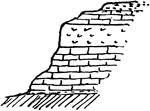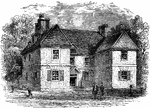Silver Fir Cone and Foliage
An illustration of a silver fir cone and a small branch. Silver Fir or European Silver Fir (Abies alba)…

Rainbow Smelt
The Rainbow Smelt (Osmerus mordax) is a North American fish in the Osmeridae family of smelts named…

Vermilion Snapper
The Vermilion Snapper (Rhomboplites aurorubens) is a North American and Atlantic fish in the Lutjanidae…
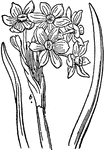
Narcissus
Narcissus is the botanic name for a genus of mainly hardy, mostly spring-flowering, bulbs in the Amaryllis…
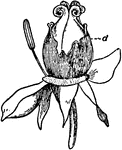
Peony Bud
Paeonia) is the only genus in the flowering plant family Paeoniaceae. They are native to Asia, southern…
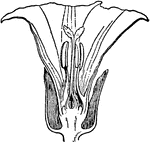
Calystegia Sepium
Calystegia sepium (Larger Bindweed, Hedge Bindweed, or Rutland beauty) is a species of bindweed, with…

Calystegia Sepium Bud
An illustration of a Calystegia sepium bud. Calystegia sepium (Larger Bindweed, Hedge Bindweed, or Rutland…
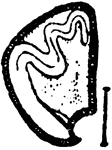
Calystegia Sepium Seed
An illustration of a Calystegia sepium seed cut lengthwise showing the embryo. Calystegia sepium (Larger…
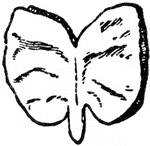
Calystegia Sepium Embryo
An illustration of a Calystegia sepium embryo. Calystegia sepium (Larger Bindweed, Hedge Bindweed, or…
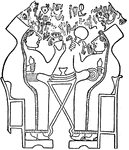
Hittite Women
An illustration of two Hittite women sitting. The Hittites were an ancient Anatolian people who spoke…

Velvet Crab
The velvet crab (alternatively velvet swimming crab or devil crab) is the largest swimming crab found…

Masked Crab
Corystes cassivelaunus, the masked crab, helmet crab or sand crab, is a burrowing crab of the North…
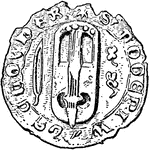
Crwth on a Seal
An illustration of a crwth on a 14th century seal. The crwth (in English crowd) is an archaic stringed…

Annual Honesty
Annual Honesty (Lunaria annua) is a tall (height about 1 m), hairy-stemmed biennial plant found throughout…
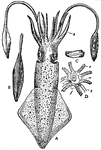
European Squid
The European Squid (Loligo vulgaris) is a large squid belonging to the family Loliginidae. It occurs…
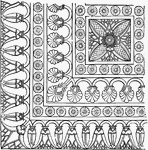
Part of the Floor Decoration from North Palace, Nineveh
This portion of a pavement-slab in the North Palace at Nineveh has a certain accordance with the Grecian…

Floor Plan of the Palace at Nimrud
One peculiarity is visible in all Assyrian buildings, namely, that all the chambers are very narrow…

Willow Canker
"Scleroderris fuliginosa. a, immature ascocarps ... S. fuliginosa is said to be parasitic on twigs and…
Willow Canker
"Scleroderris fuliginosa. b, ascus containing spores and accompanied by paraphyses ... S. fuliginosa…
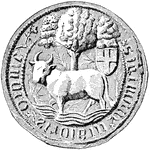
Riddle Seal
The riddle in this "Riddle-seal of Oxford" is an 'ox' crossing a 'ford.' "A seal which contains a rebus,…
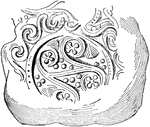
Vase Sealing
"Ancient Cretan sealing. An impression in clay used to seal vases and other receptacles, examples of…

Pendulum Seismograph
"inverted Vertical Pendulum Seismograph. Marvin System. A stiff vertical tube, pivoted at its bottom…

Motto Label
The motto label is a found on the seal of the town of Schiltach, Germany. It has a Gothic inscription…

Early Gothic Finial
This early gothic finial is a 13th century three dimensional cross. Made out of stone, it decorates…
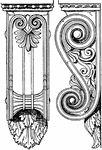
Greek Console
The Greek console is shown in the front and side view. It is found as a support to the North door of…
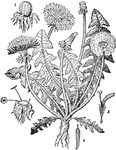
Dandelion
Taraxacum is a large genus of flowering plants in the family Asteraceae. They are native to Europe,…
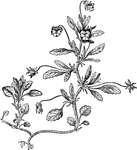
Heartsease
Heartsease (Viola tricolor) is a common European wild flower, growing as an annual or short-lived perennial.…
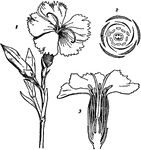
Dianthus
Dianthus is a genus of about 300 species of flowering plants in the family Caryophyllaceae, native mainly…

Beaumaris Castle
Beaumaris Castle, located in Beaumaris, Anglesey, Wales was built as part of King Edward I's campaign…

Amiens Cathedral
The Cathedral of Our Lady of Amiens (French: Cathédrale Notre-Dame d'Amiens), or simply Amiens…

Temple of Theseus
The Temple of Hephaestus and Athena Ergane, also known as the Hephaisteion or Theseion, is the best…
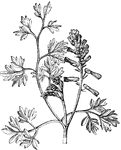
Fumitory
Fumaria is a genus of about fifty annual herbaceous flowering plants in the family Fumariaceae, native…

Fumitory (Side-view)
An illustration of the side-view of the fumitory flower Fumaria is a genus of about fifty annual herbaceous…

Fumitory Flower (Longitudinal Section)
An illustration of a longitudinal section of the fumitory flower. Fumaria is a genus of about fifty…
Fumitory Flower Anther
An illustration of a fumitory flower anther. Fumaria is a genus of about fifty annual herbaceous flowering…
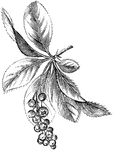
Berberis
An illustration of a berberis branch. Berberis (Bér-be-ris, barberry, pepperidge bush) a genus…
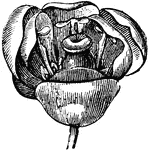
Berberis Flower
An illustration of the berberis flower. Berberis (Bér-be-ris, barberry, pepperidge bush) a genus…
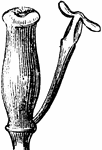
Pistil and Stamen of Burberis
An illustration of the a stamen and pistil of the berberis plant. Berberis (Bér-be-ris, barberry,…

Fruit of Berberis
An illustration of the berberis fruit. Berberis (Bér-be-ris, barberry, pepperidge bush) a genus…
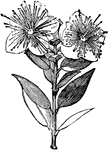
Myrtle
The Myrtle (Myrtus) is a genus of one or two species of flowering plants in the family Myrtaceae, native…

Beech
An illustration of a flowering branch and empty cupule of beech. Beech (Fagus) is a genus of ten species…
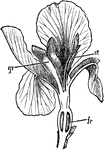
Iris
Iris is a genus of between 200-300 species of flowering plants with showy flowers. It takes its name…

Bearded Seal
The Bearded Seal (Erignathus barbatus) is a seal in the Phocidae family of true or earless seals.

Monkwearmouth Church
Monkwearmouth is an area of Sunderland located at the north side of the mouth of the River Wear. It…

Hepatica
An illustration of liverwort (Hepatica): a, Thalloid stem with female branches; b, Thalloid stem with…
Dakota Artesian System
East-west section across South Dakota to show the Dakota artesian system. The Dakota sandstone is composed…
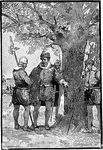
Croatan Carved into Tree at Roanoke
John White finds the only clue to the disappearance of the "Lost Colony" of Roanoke: a tree carved with…

Medieval Helmet with Fan Crest
"Fan-crest, about 1350. A form of crest common in the middle ages at different periods, as in the reign…

Interior of Fort Garry
Fort Garry, also known as Upper Fort Garry, was a Hudson's Bay Company trading post at the confluence…
St. Gothard Massif, Switzerland
North-south cross-section of the St. Gothard Massif, Switzerland, showing the fan-folds.

North Hill Overthrust
Section through North Hill, Kingston, N.Y. showing the overthrust which led to a repetition of the strata.
New York Peneplane
North-south section across western New York, showing the three cuestas and lowlands and the tilting…
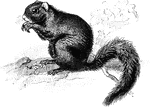
Black Fox Squirrel
The Fox Squirrel (Sciurus niger) is a rodent in the Sciuridae family of squirrels. The black fox squirrel…
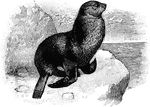
Northern Fur Seal
The Northern Fur Seal (Callorhinus ursinus) is large seal in the Otariidae family of eared seals.

William Penn
William Penn (October 14, 1644 – July 30, 1718) was founder and "Absolute Proprietor" of the Province…

Ostrich
"Struthio camelus, the Ostrich or "Camel-bird" of North Africa now extends from Barbary to Arabia, and…

Kiwi
Kiwi, Apteryx australis, of the South Island, is lighter (than the Apteryx mantelli of North Island),…

